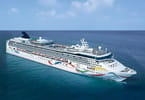STARTING AT GROUND LEVEL
Air travel has become one of the defining features of the 21st century. It defines a person’s status. It defines a business’ courage. It defines a nation’s ambitions. And it defines just how far the vision of the future can reach. In these borderless, fearless, limitless times in which we live, air travel has evolved from being a luxury to a necessity. If we want to go anywhere in life, literally or figuratively, the fastest and most comfortable way to get there is through the air.
It was not that long ago, however, that air travel was simply about, well, air travel.
Once upon a time, travelers would plan a voyage; contact a travel agent; wait for flight options based on dates, prices, connections, and carriers; book their journey; count sleeps until the day of departure; put on their finest; make their way to the airport (often with excited friends and family along to wish them “bon voyage”); and then finally board. Taking their seats, their confidence and faith was invested in the airline’s beautifully-attired air hostesses and authoritatively-uniformed pilots. With a wave good-bye (and sometimes a little prayer), they were off. At the other end, family, friends, and business partners would anxiously await their arrival. The process of getting from A to B was rather black and white. What happened in between departure and landing was a pleasant blank – a happy grey area.
And then the latter days of the 20th century happened. With industrialization and globalization came hyper-growth of the air transport industry. Things needed to happen faster, sooner, and cheaper, regardless of how far apart Customer A, Manufacturer B, and Supplier C may be. The world shrank as individual aspirations, business ambitions, and global air routes stretched. Business meetings increased in commuting distance from 7 km to 7,000 km.
As a result, the race for the skies has taken on a whole new set of characteristics, becoming about so much more than altitude. With the remarkable growth of air travel has come the inspired and inspiring evolution of the airline industry and experience. Increased choice in aircraft, airlines, airports, hubs, routes, and destinations has, for travelers, turned the question of airline choice into a multifaceted affair. Price, flight time, connections and carrier remain key considerations, particularly for the bulk of the traveling public who may be traveling with others, i.e., families, and with a total travel budget in mind. Economy traveler needs of the flight are focused in-flight.
Things become much more complex, and elements of competition much more creative, however, the closer one gets to the pointy end. Airlines offering superior business and first-class service now face a unique challenge. For travelers upfront (or up top, in the case of some airlines), the journey at 35,000 feet has taken on a whole new meaning, and competitiveness, where customer service and airline brand delivery are concerned.
The airline experience of the 21st century has changed dramatically. New routes, new fleets, new quantities start to define the traveler airline experience. New gadgets, new limousine services, new lounges, and new giveaways – all of these elements have become a means of airline brand definition and competition. For the traveler, getting there has become one of the pleasures, and often, an entertaining aspect of the total travel experience. The difference between classes of service on an airline can, in themselves, feel worlds apart.
For travelers in economy, a long-haul flight typically translates to a long night of little space, little sleep, little quiet, and quite a little shoulder and back ache. The trip really starts when landing at the destination. Expectations of enjoyment of the flight are low. Further up front, A to B is no longer the end-goal. It is about A to B, through lounge C, at a discount of X, with the benefits of D and E, plus special services of F, and don’t forget the bonus of G% air miles and $H contributed to going green. Competition starts at ground level. A long-haul flight becomes an experience offering lots of space, lots of quiet, lots of movies caught up on, lots of emails answered, and lots of needed sleep. Flying time becomes “my time.” The pleasure of the journey begins at check-in (and, in some cases, even earlier at time of chauffeur-driven pick-up). Expectations of enjoyment of the flight climb skywards, sending the decision-making process around which airline to take into a whole new galaxy.
Take, for example, a journey from Cape Town (CPT) to Hong Kong (HKG). The number of choices of carriers is double digit, especially if a traveler is willing to sacrifice time for the sake of price or air miles. The simplest way to go would be direct, South Africa to Hong Kong. Though even that may not be possible as direct flights to Hong Kong depart from JNB, not CPT. So, a two-flight routing is unavoidable.
Having established that, which airline(s)? Will it be the national carrier of South Africa (SAA), flying CPT to JNB, and then JNB to HKG? Or perhaps Hong Kong’s main carrier, Cathay Pacific for the JNB to HKG route? That would be an easy, smooth trek.
Other options, more price competitive perhaps? Traveling via the Middle East now enters the competition. Emirates? Qatar Airways? Etihad? In all of these cases, a little more travel time is needed, but this regional routing can make for significant cost savings, in all classes. Also, the aircraft are usually all shiny and new, and the crew are traditionally very warm in their natural, culturally-inspired service style. Emirates also offers chauffeur services on both ends, eliminating transport hassles to and from the airport. Also, Dubai Airport’s opulent T3, really a luxury duty-free mall with air bridges attached, offers some of the world’s best duty free, which can, in fact, make layover travelers wish for longer transit times. And don’t forget the lounges – a real oasis in the dessert. The new QR Premium Terminal in Doha is also a lovely way to pass long transit times, and the QR flights are very pleasant – beautiful aircraft, five-star dining, and excellent collection of wines. But HKG also has great duty free. And the CX lounge at HKG has a great noodle bar… Click. Search. Click. Search. Click. Search.
Good heavens. What happened? When did travelers shift their expectations from safe, on-time arrival with baggage in tow, to preferred boarding, sexy technology, specific menu choices, and special status? When did flying become about so much more than 35k?
And is there one “world’s best airline”? Can there be?
DEFINING “BEST”
Technically speaking, one can compare airlines in terms of technical offerings – the hardware. Flatbed suites, 500 channel entertainment systems, in-flight bars, massages, and showers. Alternatively, one can define “best airline” according to on-time departure, on-time arrival, and percentage of baggage losses. The choices in criteria are as broad as the number of travelers defining “best.”
What really makes an airline “the best?” The truth is, for all of the advances in technology, terminals, and touchpoints, what is best depends entirely on the person defining “best.” And that is exactly the point.
Just as no one hotel can be the “best” for the global traveling population, so, too, it is impossible for one airline to be defined as “the best.” Why? Because it depends on the criteria and, therefore, the characteristics of the judge. For some travelers needing accommodation, the Radisson is the best hotel for business, anywhere. For others, it is the Ritz Carlton – perfect for a stylish city weekend getaway, and for others, the luxury, boutique Red Carnation collection of hotels.
There is no right or wrong. Just what is right for that specific traveler is defined by the traveler. As we learned when we were children, it is not up to the three bears to define what temperature of porridge is right for Goldilocks. All of the choices need to be made available (and promoted, so she is aware of her options). Some will be too hot. Some will be too cold. Some may be just right. And then again, actually, she may find that she does not enjoy porridge at all.
A WORLD OF CHOICES
Tablestakes aside, the global airline industry has turned air travel into an art. Low-cost carriers (LCC) refined the art of cost savings, literally opening up the world for a world of travelers. Flag-carrying carriers continue to work to redefine the art of service experience in a way that reflects national culture and pride. Private jets have become the definition of the elite business and luxury travel. Whatever the class of travel, whatever the airline, the traveler will determine what feels right, based on what matters for them. Price, seat position, service personality, preference for day flights vs. red eyes, direct vs. detour, all of these decisions feed into what is best for the traveler, made by the traveler.
The day we create one, homogenous definition of “best” for travelers – effectively for ourselves – is the day we forfeit our individual preferences and pleasures for commoditized efficiency. That is the day the journey from A to B loses, for the traveler, the beauty, and intrigue of discovering not just new letters, but a whole world of new alphabets, while up at 35K.
WHAT TO TAKE AWAY FROM THIS ARTICLE:
- It is about A to B, through lounge C, at a discount of X, with the benefits of D and E, plus special services of F, and don't forget the bonus of G% air miles and $H contributed to going green.
- For travelers upfront (or up top, in the case of some airlines), the journey at 35,000 feet has taken on a whole new meaning, and competitiveness, where customer service and airline brand delivery are concerned.
- For travelers in economy, a long-haul flight typically translates to a long night of little space, little sleep, little quiet, and quite a little shoulder and back ache.






















